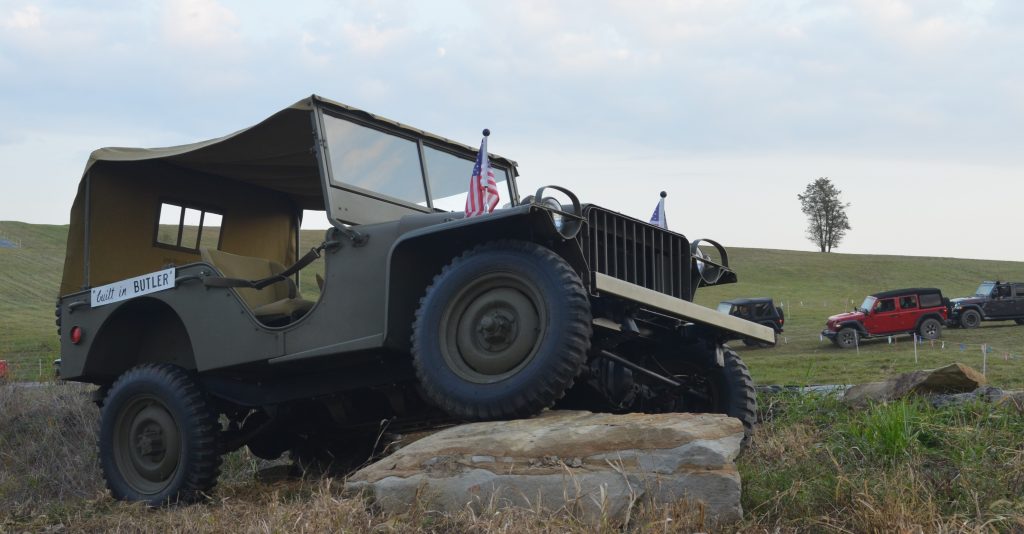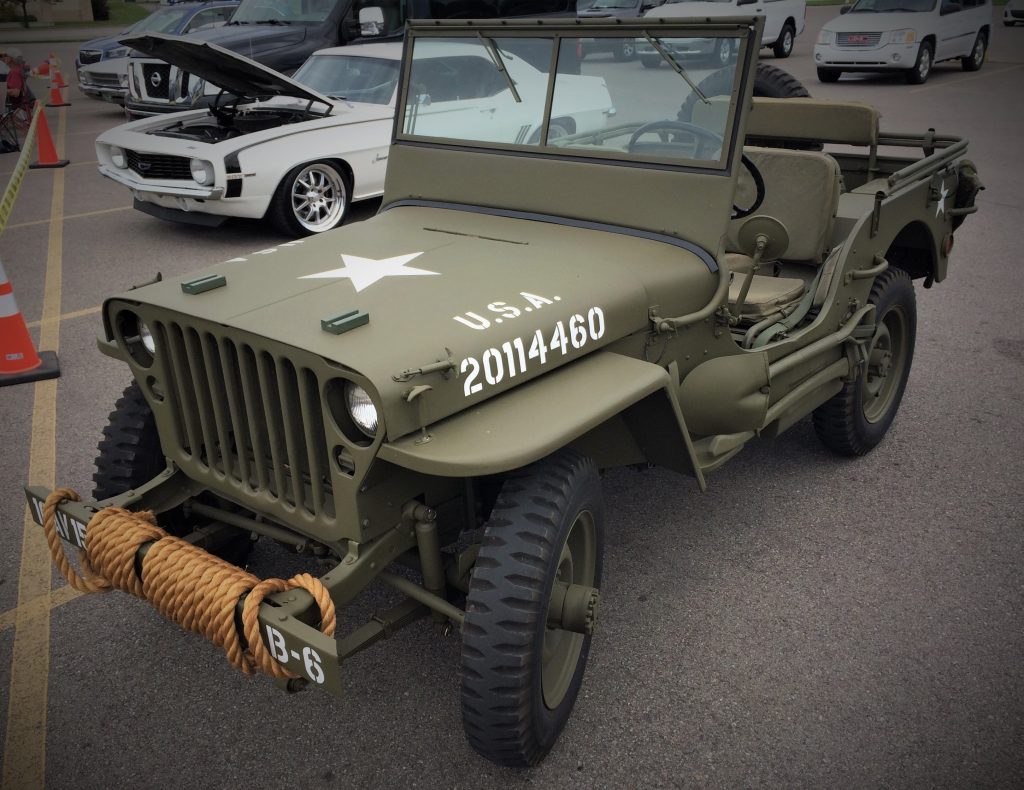While most every gearhead knows about the iconic military Jeep that helped carry the Allies to victory during World War II, they may not be entirely familiar with its origin and development.
Truth is, the Jeep has a few parents, namely Bantam, Willys, and Ford.
All three developed concepts for a military scout vehicle early in World War II, yet it was Bantam’s 4×4 Reconnaissance Car (BRC) that showed the most promise and formed the nascent Jeep’s basic layout.

But the United States military kept Willys and Ford at the table, opting for a “design by committee” approach to ensure its lofty performance goals were met.
So using the BRC prototype as a benchmark, Willys developed its MA and eventually the MB—which ended up winning the primary military production contract.
Hence, the Willys MB is what most people picture when they hear the words “Army Jeep.”

Yet, to get more Jeeps onto the battlefield, Ford stepped in to produce the MB under license from Willys, with Ford’s model being designated the GPW.
Save for some minor discrepancies, the MB and GPW are mostly identical. That was a strategic move to ensure parts would be interchangeable between the two for field service.
But it was Ford’s assembly line expertise that begat the iconic Jeep “Slot Grille.”
Instead of using the Willys grille that was fabricated out of several parts, Ford simply stamped the GPW grille from a single piece of steel. Ford’s method was much faster and cheaper, so Willys adopted the process too, which solidified the Jeep’s signature visage.

When we spotted this particular Jeep on its way to a car show a few weeks ago, we immediately noticed the script F-o-r-d on the back, which told us this was a legit Ford GPW—and that we had to talk to its owner to learn more.

“It was made in May of 1942,” Mike McKinney tells us. “My Dad bought it in the 1960s, and he did a lot of work to it.”
The eldest of three sons and a retired Army veteran, Mike inherited the Jeep when his father passed away about a decade ago. In the years since, the GPW’s been treated to a thoughtful restoration.

“It had a lot of M38 parts on it. It was mix-and-matched, but back then it didn’t matter,” Mike says. “Now I’ve put it back to original.”
As alluded to above, that’s not uncommon. To make field repairs easier, parts were often relatively interchangeable, even between later military Jeeps, like the M38, and their civilian counterparts in the CJ series.

Mike then describes a restoration process that took him a couple of years, working off and on between other automotive projects. (If you couldn’t tell, Mike’s an avid gearhead too, and currently working on a hot rodded 1951 GMC truck.)
But then our attention was drawn to the Jeep’s hood number, 20114460, and we asked Mike what it meant. “Those numbers on the hood, a lot of people think that’s the serial number,” he begins. “But it’s not. It’s actually the invoice number. The different military services, the Army, Navy, Marines, they ordered a specific amount, so all the quarter-ton Jeeps start with a 20, the next numbers were the invoice number.”
Then, Mike gestures to his GPW’s hood. “This number is original to the vehicle.”
The 1CAV15FSB markings on the front and back bumpers however, have a different, more personal meaning. “That’s the last unit I was in before I retired,” Mike explains. “First Cavalry Division, 15 Forward Support Battalion.”

Mike says both he and the GPW are enjoying retired civilian life. “I just drive it on nice days, when it’s not going to rain or be too extremely hot,” he laughs.
And on that note, we thanked Mike for his service and let him go enjoy the rest of the car show.



I love the GPW and wish I’d have kept the one I had ready for restoration.
Was für schöne Fahrzeuge.
Ich bin begeisteter Jeep Fan.
Ich baue einen Jeep Ford GPW als RC-Modell
im Maßstab 1:6 aus Metall.
Viele Grüße
Rudolf Mineif
Vielen Dank fürs Lesen. Viel Glück mit Ihrem Modellbausatz!